RV maintenance tips that are so easy, anyone should be able to do them.
This camping season, give yourself the gift of safety by maintaining your RV and all its systems properly. Keeping up with preventive maintenance can also save money and eliminate stress by reducing the risk of unnecessary breakdowns. While some maintenance will need to be performed by professional technicians, here are a few basic tasks you can do yourself to extend the life of your RV and its components, including batteries, tires, slide-outs, roofs and holding tanks.
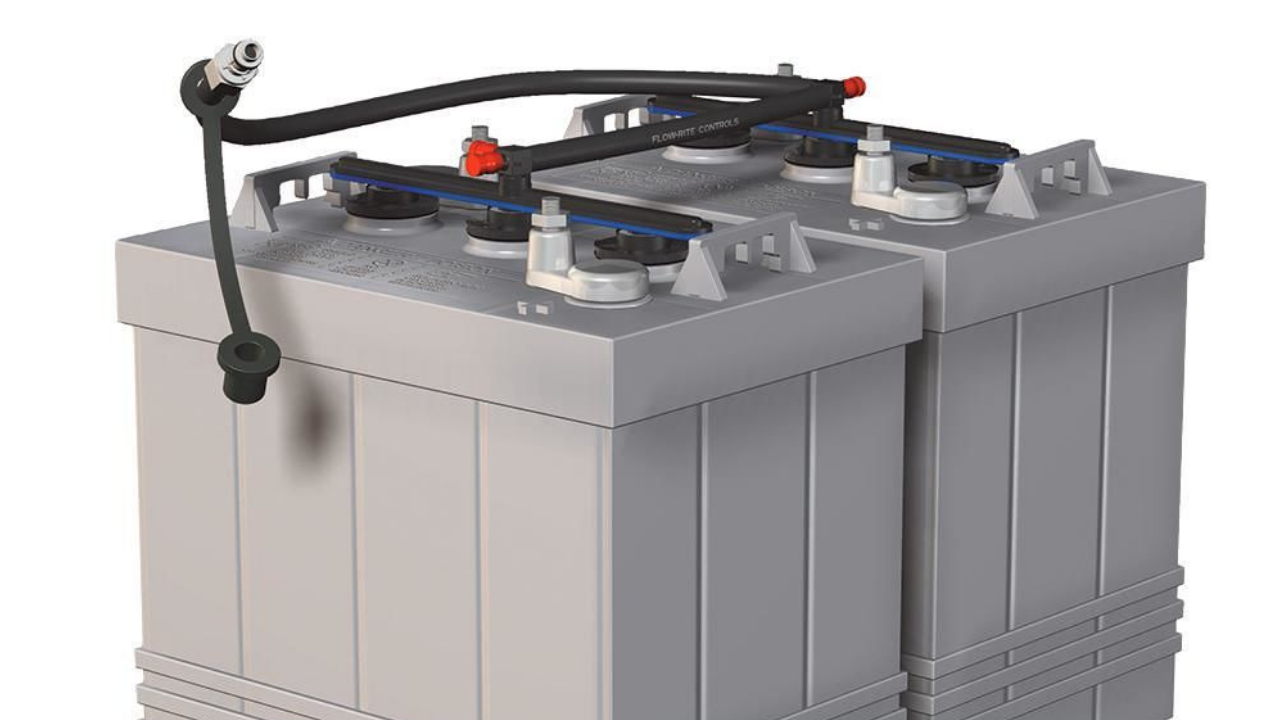
This Battery Watering System available at Camping World simplifies an important process.
Batteries
Batteries fail prematurely for a variety of reasons, many of which are preventable by practicing good preventive maintenance. Failing to do so results in hundreds of wasted dollars spent replacing them. Most RVs come with deep-cycle lead-acid batteries. Their life span depends on you and how well you maintain them.
Follow these three key tips to keep your batteries in tip-top shape during camping season:
- Keep Terminals Clean of Corrosion: The simplest thing you can do to maintain a battery is to keep it clear of corrosion with a solution of thick baking soda and water.
- Maintain Water Level in Flooded Batteries: Distilled water is the primary fluid necessary for lead-acid battery health. It’s important to maintain proper levels. One of the easiest ways to do this is with a battery watering system, which allows you to fill safely and simultaneously from a single remote position without ever having to touch a battery or remove a cap.
- Keep Batteries Topped Off When In Storage: If you have to store your RV for any length of time, don’t forget about the batteries. In addition to maintaining fluid levels, make sure you are trickle charging them as well.
When taking your RV out of storage for the first camping trip of the season, follow these 7 steps paying close attention to the electrical systems and batteries.
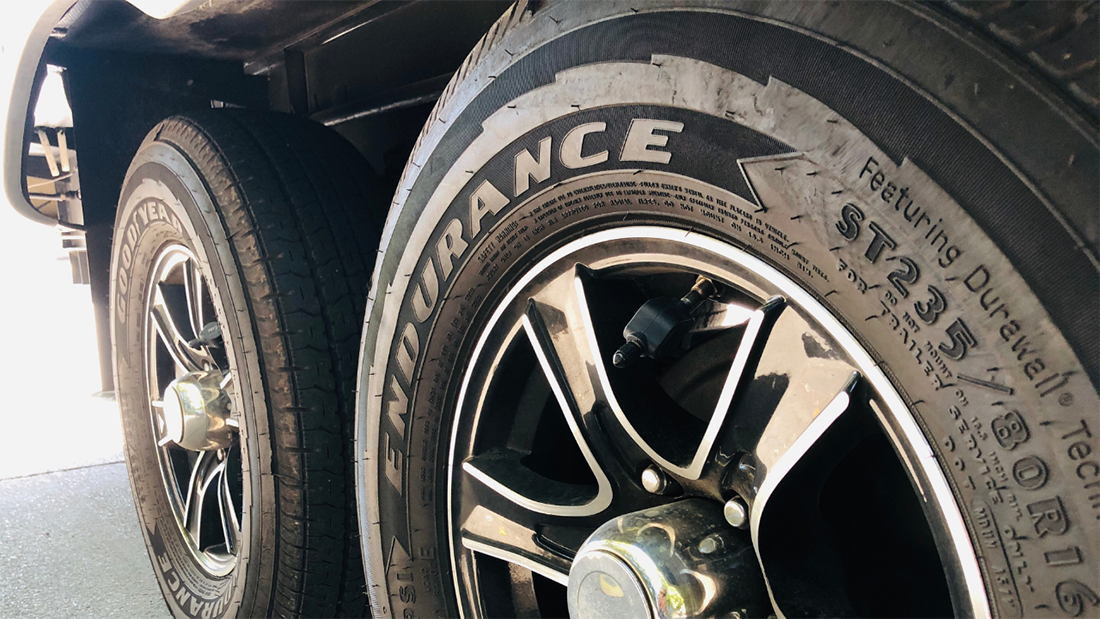
Keep a close eye on your tires. You have a lot riding on them. Photo by Julie Chickery
Tires
How many miles do you put on your RV each year? Chances are it is quite a bit, and each time you get on the road there is a chance that something could go wrong with your tires. It doesn’t matter whether you are in a large motorhome or a smaller towable, tire failure is an issue that can affect all RVs. Luckily there are a couple of things you can do yourself to prolong their life.
- Visually inspect your tires: Always walk around the RV and give your tires a good once over before setting out on a trip. Look for cracks which can be early warning signs of dry rot. Don’t forget to inspect the tread. Tires depend on good tread condition depth to maintain traction and to shed water on wet roads. The more often these inspections are performed, the easier it will be to find a small problem, such as a nail in your tire, and fix it before it becomes a more expensive and time-consuming issue.
- Monitor tire pressure: You can do this manually before each trip or you can use a tire-pressure monitoring system. A tire-pressure monitoring system, or TPMS, consists of a series of sensors that screw onto each tire’s valve stem to monitor tire air pressure and temperature. We have the sensors installed on both our fifth-wheel and our truck tires. While a TPMS can’t prevent every blowout, it can warn you in enough time to safely pull over. Follow these steps to help you determine the correct pressure for your weight load.
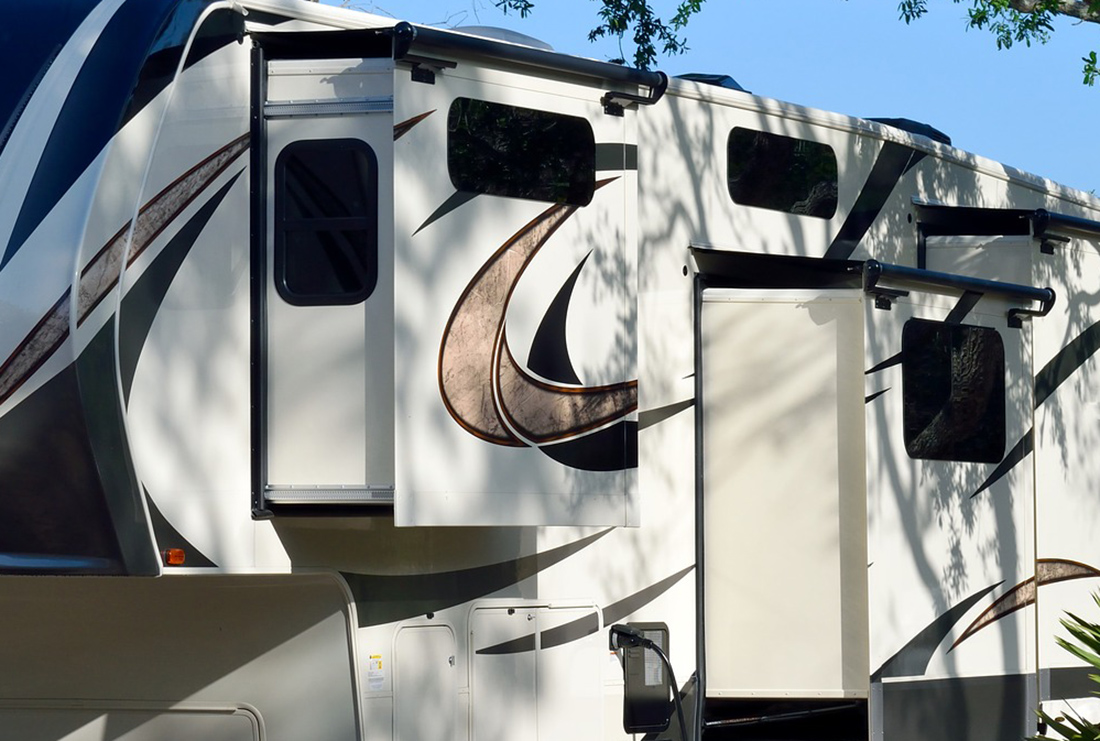
Slide-outs on a fifth-wheel trailer. Photo: paulbr75
Slide-outs
There are several components to your slide-outs, but we’ll cover the seals, toppers and the mechanism here.
- Seals: The seals on the slide-outs keep your heat and air conditioning in, as well as keep unwanted rain or moisture out. The best thing you can do for your seals is to keep an eye on them. Look closely for cracking or tears. Any damage can allow moisture into the RV. If you note any problem, you’ll want to take it into a service center be replaced right away.
- Slide-out toppers: Many RV slide-outs come with toppers or awnings. Always look at them before retracting and be sure to brush away any debris that may accumulate, particularly if you are camping in a wooded area.
- Mechanism: Whether you have a hydraulic or electric slide-out mechanism, the most basic preventive maintenance is to keep them lubricated. Most manufacturer-recommend a dry lubricate spray to protect the metal parts of the RV slide-out assembly.
- Read these tips for more in-depth slide-out maintenance.
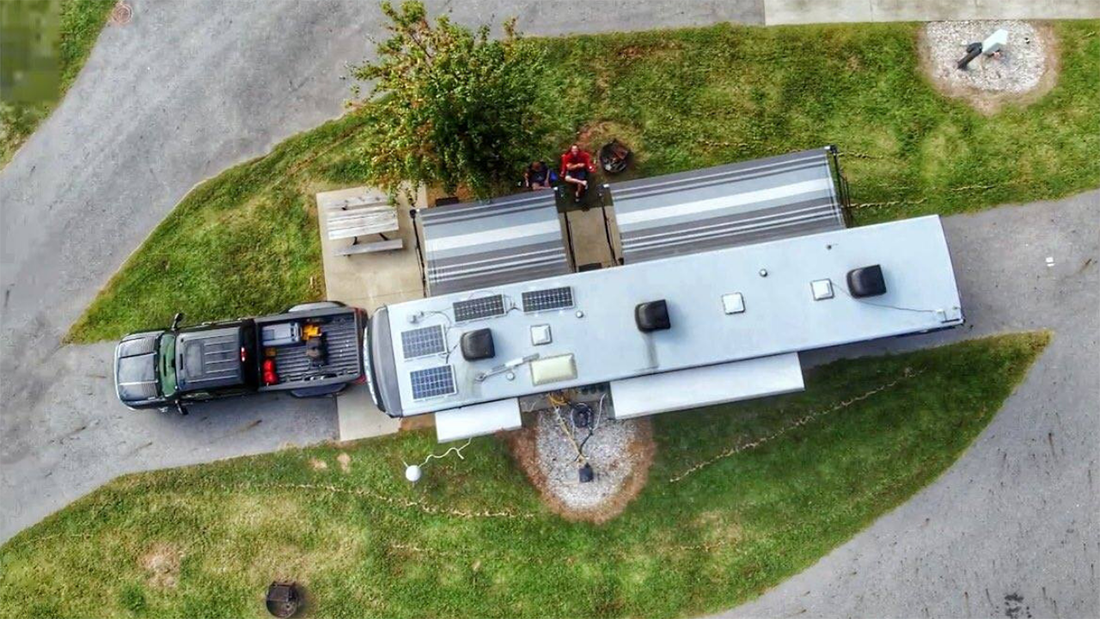
Taking proper care of your roof goes a long way to protecting your investment. Photo by Julie Chickery
Roofs
Keeping the RV roof in shape is especially important to avoid water damage, which can be very destructive. Unfortunately, while it is typically easy to maintain, roof care is often overlooked. Perform these two simple tasks at least twice, but preferably four times each year to protect your investment:
- Inspecting: It is very important to periodically climb up and inspect the roof to catch any sort of roof damage before it leads to leaks or other interior damage to your RV. Look closely for any cracks or punctures in the roofing material. Check the seams along the edges of the roof, where it’s connected to the body of your RV, as well as around any skylights, air conditioners or other places where water might be able to enter.
- Cleaning: After completing your inspection and sealing any trouble spots, the next step is to give your roof a thorough cleaning with a mild cleaner and soft brush. If you are camping in an area where tree sap will fall on your roof, don’t wait for the semi-annual cleaning. Go ahead and do it right away or twigs and leaves can get caught in the sap.
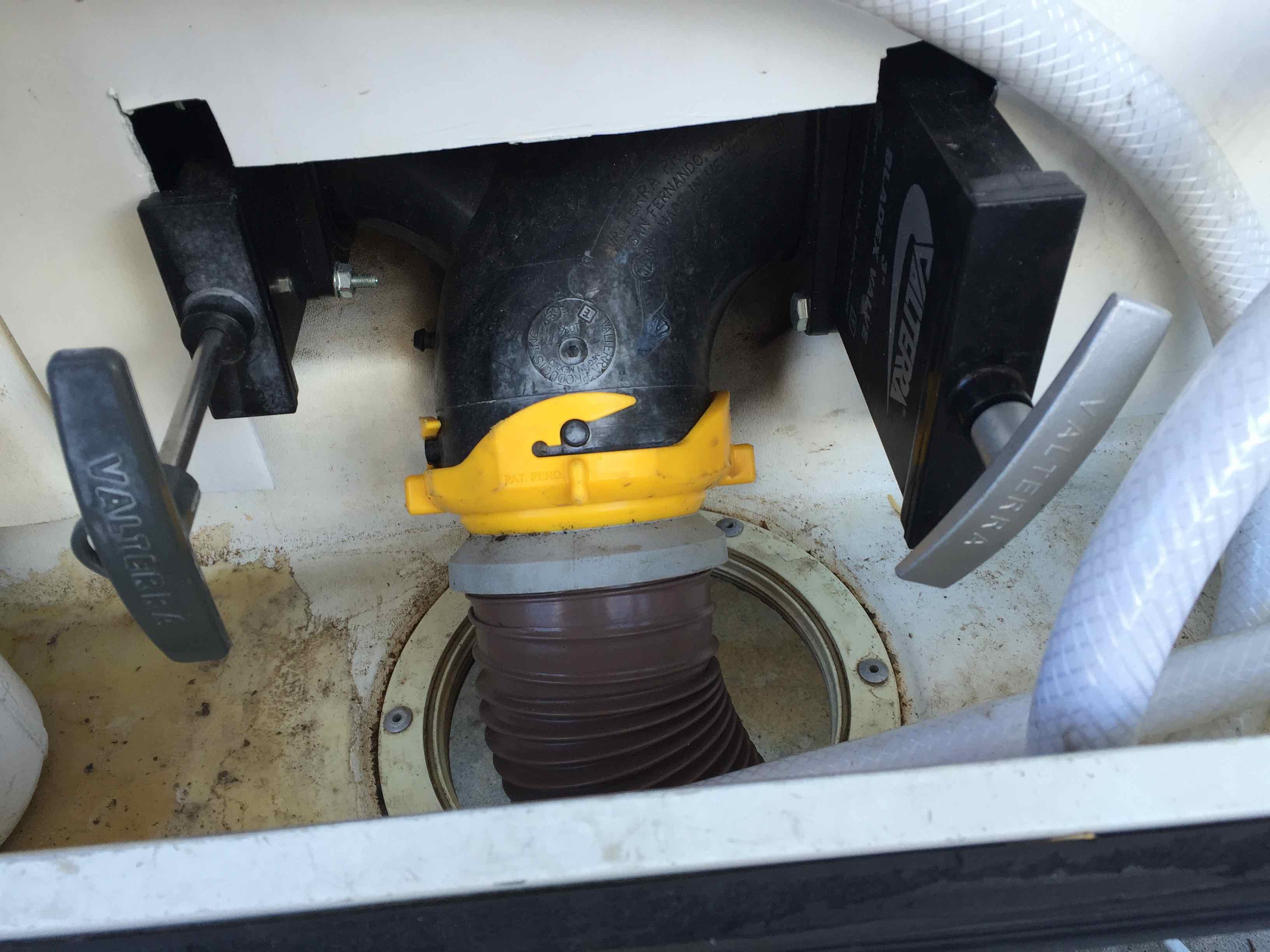
Black-water hose. Photo Credit: Peter Mercer
Holding Tanks
RVs are equipped with three holding tanks: fresh water to use when you don’t have a water source, gray wastewater from your sinks and black waste water from the toilet.
- The only real maintenance that needs to be performed on the fresh water tank is to sanitize it after it has been in storage or if you have not used it in a few months. It is also a good idea to filter the water coming into your RV to reduce contaminants and sediment from your RV water system.
- When using your RV, the best thing you can do for your gray and black water holding tanks is to make sure there is plenty of water in them. One of the most common mistakes RV owners make is to dump them too often. Emptying your tank too often or when it’s still pretty low means solid waste will be left behind. The fuller the tank, the more water there is to flush out the waste more thoroughly. If you’re constantly dumping, solid waste will stay behind, getting caked to the inside of the tank and interfering with the tank sensors.
- When you’re connected to a sewer at a campground, always keep the tank valves closed until you need to drain. Otherwise, you won’t get the buildup you need for thorough dumping.
- It is also important not to let the seals dry out in your RV toilet. If the seal gets hardened or dried out, a leak can emerge within your toilet causing the water that usually stays inside the toilet bowl to fall into the holding tank.
All of these preventive maintenance tasks are simple for any RV owner to perform. However, if you have any questions or concerns, contact your local Camping World for assistance.




